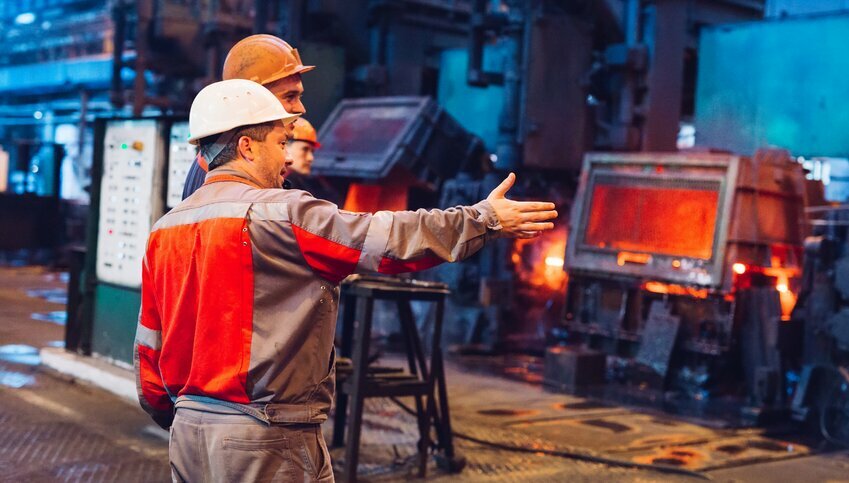 Credit: CanvaPro
Credit: CanvaProNuScale’s first small modular nuclear plant will likely begin operating in Idaho Falls at the U.S. Department of Energy’s Idaho National Laboratory in 2029. It will deploy six 77-megawatt modules to generate 462 megawatts of carbon-free electricity.
The smaller nuclear units, assembled onsite, are cheaper to build, safer to operate, and could “rapidly” appear in North America in the 2030s.
Nuclear energy is carbon-free and runs 24-7. Right now, 93 nuclear reactors provide about 20% of the U.S. electricity portfolio. But that energy makes up about half of the country’s carbon-free electricity. Those reactors can operate safely until at least 2050. However, the newly-enacted production tax credits, which start in 2024 and last until 2032, will inspire the building of small modular reactors — units that will last at least 60 years and replace those existing plants.
Right-sized reactors can run from 50 megawatts to 300 megawatts. But the modules can be combined to form a 1,000-megawatt plant. And if one module goes down, it can be repaired while the rest still operate. Such units have some built-in advantages: they generally come with a nuclear waste storage containment device, while they could create potable water supplies and produce hydrogen for industrial steelmaking. While they run 24/7, the units can also firm up wind and solar plants.
The U.S. Department of Energy has identified emissions reductions in the steel manufacturing industry as essential to reach net zero by 2050.
Beyond the project at the national laboratory, NuScale and Nucor have signed a memorandum of understanding to co-locate one of NuScale’s reactors with Nucor’s scrap-based Electric Arc Furnace steel mills. The goal is to amp up carbon-free steel.
"Nucor is committed to supporting the development of transformative technologies that will deploy safe, reliable, affordable, 24/7, base-load carbon free power, like NuScale’s VOYGR SMR plants,” said Leon Topalian, chief executive of Nucor. “Not only will Nucor’s partnership with NuScale help pave the way for a zero-carbon energy future for our nation, but we will be building this new generation with the cleanest steel products made anywhere in the world.”
The International Atomic Energy Agency says that the use of nuclear energy will need to double by 2050 to meet global climate goals.
NuScale’s effort is the start of something big. TerraPower and GE Hitachi Nuclear Energy launched the so-called Natrium project in September 2020 — a small modular reactor they hope to commercialize by 2030. They are now testing the technology, along with Berkshire Hathaway’s PacifiCorp. The Natrium reactors are purportedly able to firm up wind and solar power. In other words, it would be a clean backup generator.
Meanwhile, Ontario Power Generation plans to start constructing a small modular reactor in late 2024 and begin operating in 2028. The Tennessee Valley Authority is using the same technology. It expects to start up a small nuclear plant in the early 2030s.
Europe plans for at least 10 small modular reactors. Poland, which relies on coal, is the most interested. So is Sweden. Its state-owned utility Vattenfall said it must turn to fossil-free energy sources to meet the nation’s growing energy demand. And the French government is investing $1 billion in the technology. Electricite de France SA will build them by 2030.
But what about the cost? “Our reactor is about the same price as the Boeing 777,” Donald Wolf, chief executive of Advanced ARC told this writer. “It will be fabricated in a factory and delivered to the site. But there will be a learning curve that goes along — exactly what happened with large-scale computers. That is the model for the small modular reactors.”
Rick Springman, senior vice president for Holtec International agrees, telling this reporter those smaller reactors are “first-of-their-kind projects” that will cost more to build. But economies of scale along with automation will drive down the expense.
The so-called Generation IV high-temperature reactors are best known for electricity generation. But they can also be used by industry. Because they operate at 800 degrees Celsius, they can process chemicals, desalinate ocean water, and produce clean hydrogen for electricity and transportation. Even better: the reactors can locate where shuttered coal plants once stood, restoring economic health to devastated regions of the country.
Nuclear can address the hard-to-decarbonize industrial sectors.
For example, Dow is partnering with X-energy to develop a small modular reactor at one of Dow’s sites along the Gulf Coast, which could go live in 2030. Each modular reactor can generate 80 megawatts. But they can be stacked together to produce 320 MW, providing clean, reliable, and safe baseload power to support electricity systems or industrial applications.
Small modular reactors may fuel a nuclear energy renaissance. Decarbonization is the catalyst, propelled even further by favorable public policies such as the Inflation Reduction Act. But costs are still the missing variable. Companies like NuScale and TerraPower are the first movers who can prove their worth and scale the technologies.